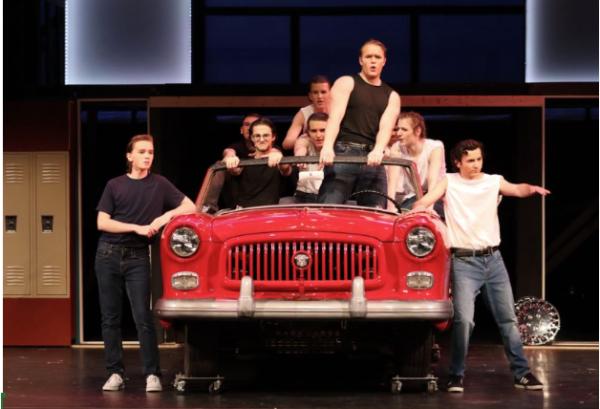Students Struggle With Swarmed Sports Spaces
The Adams’ track and field space as the track, soccer, and lacrosse teams begin their practices.
For many Highlanders, the end of the cold weather means the beginning of training for spring sports- including baseball, softball, lacrosse, soccer, tennis, and track. This wide variety means that there is a sport for everyone to try. The downside, however, is most activities occupy the same space: the track and field.
As the school day comes to a close, student athletes of many sports jam into the locker rooms and head outside to begin their daily routines. Other athletes, including Adams boys’ lacrosse, who conduct practice at night instead of after school, go home to finish their homework and grab a snack before their later practices. Adams coaches work together to stagger practice times in the hopes of easing the overcrowding students often face on the school’s field space.
“Adams should really have a second turf behind the football stadium. That way more teams can practice at more reasonable times,” said senior and varsity lacrosse player Jacob Jaumotte.
While the staggered practice times help those with practices immediately after school, or do not mind practices late at night, the issue still stands. With the number of sports that have to use the same area for practices, a safety hazard is presented for athletes.
“With so many people down there at one time, I have shot the ball at the goal and missed, and it has almost hit people from the track multiple times. This happens all the time with everyone on the team,” said sophomore and junior varsity soccer player Grace Antonelli.
The Adams track and field is typically split in half and divided among the various sports teams. Ordinarily, girls’ lacrosse and girls’ soccer practice on either side of the field while track and field occupies the track.
“The lacrosse balls are made with cement centers so they will do some damage, especially to a runner or soccer player who is not paying attention,” said senior and varsity lacrosse captain Jordan Reichenbach. “There are three to four varsity teams alone out there in the spring, not to mention all the junior varsity and freshman teams too. Lacrosse often gets put on the upper fields, which are muddy and small. As a varsity captain, it is annoying to me that our varsity team is on this low quality grass while the freshman soccer team is on the turf.”
Another technique the Adam’s athletic department has incorporated into their efforts to decrease the tensions among sports is to send certain teams to what Adams students call the “upper” or “back” fields. These are the soccer fields found behind the school across Highlander Highway.
“The upper fields are bad because of their conditions, like it being uneven and muddy all the time. The uneven ground makes you very prone to injuries such as shin splints, and rolled ankles. There is also a good amount of holes in the ground up there, so you have to frequently watch where you are running,” said sophomore and varsity lacrosse player Carlo Munaco.
These fields can be used as a handy and convenient space for teams to practice on real grass terrain, given ideal conditions. After a heavy rainstorm or as the snow melts the upper fields are prone to flooding, causing a significant amount of trouble for student athletes.
“We as a school do the best to get as many people on there to use that resource as much as possible. It affects each team in a negative way. We do the best we can so we all get the chance to use it, but it is definitely a challenge for every team involved,” said track and field coach Eric Lohr.
On top of Adams’ sports controlling the track and field, the high school’s neighbors to the north, Van Hoosen Middle School, has teams of their own. Van Hoosen’s track and field practice began April 10, and all of their practices are held in the same running space as Adams’ track and field practices.
“Just the other day, I saw Van Hoosen volleyball and wrestling running on the track and doing warmups on the field. I can remember last year as an eighth grader in track, middle schoolers were always getting plowed down by the bigger and faster high schooler’s because we all had to share the same eight lanes,” said freshman and track and field runner Amanda Mazzuchi.
Problems like these are issues which Adams’ athletes struggled with for years. While the increasing class sizes as the years go on surely do not help, the situation can offer a learning opportunity and promote awareness and responsibility for student athletes and their actions.
“Most of the athletes are pretty cognizant of each other, and can make the most of the space they have even if it may be limited,” said senior and varsity track captain Jordyn Houle.
Perhaps the issue can be simply solved with a matter of scheduling changes and an increased consciousness from students occupying the field space. Perhaps greater action needs to be taken to eliminate the safety hazards which face students. Either way, the overcrowding of the track and field area is not an issue which can be easily overlooked.










